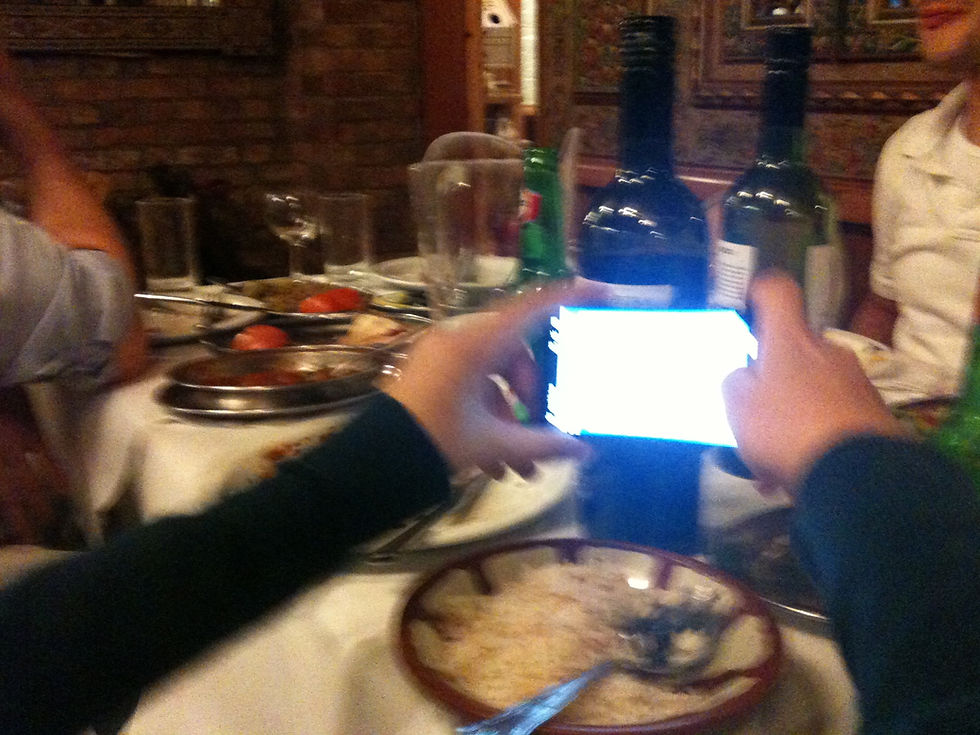Student Presentations & Socials
- Sonja Vivienne
- Oct 15, 2011
- 3 min read
Change of tack! In the interests of other deadlines I’ve decided the most efficient approach to processing OIISDP reflections is thematically rather than day-by-day ; )
It was a very rare privilege to sit in a seminar room populated by 29 brilliant PHD researchers from around the globe! In addition to the presentations from Oxford faculty and visiting lecturers we students also had opportunity to present to one another - twenty minutes each followed by twenty minutes of discussion.
The most frequently re-occurring themes were ‘privacy’ ‘participation’ ‘representation’ and these were thoroughly scrutinised from computer science, social science, political, legal and cultural perspectives via a range of qualitative, quantitative and hybrid research methodologies. Our divergent backgrounds afforded some inspired intersections in theory and practice... and laid groundwork for excellence in future collaborations... By way of quick round up, student presentations canvassed online journalism, user/audience/community engagement, ubiquitous computing, social networks as social capital, and trust, sharing and resilience in online communities.

Many discussions took place after hours in various Oxford pubs and restaurants. On the very first night we ate a ‘Welcome Dinner’ at Al-Shami and got stuck straight into discussions about research methodologies, otherwise known as, ‘how do we really know what we know?’. While this is a question that plagues some researchers more than others the logical next question ‘how do we represent what we think we know?’ was one that dominated my after hours chat for the next fortnight.
Other ‘official’ social events included an entertaining Ghost Tour, Punting, and an excellent back-yard BBQ at Bill Dutton’s abode... at which, crucially, we were introduced to Pimm’s. Pursuit of the perfect cocktail absorbed many hours of unofficial social enterprise thereafter!
Methodology - my new favourite subject!
During the early days of the programme a spectrum of research methodologies quickly emerged... Note, not a binary division between ‘quantitative’ and ‘qualitative’, but a diverse range of intersecting practices. Coming from a cultural studies perspective I was fascinated by presentations featuring Node-XL by Marc A. Smith and Bernie Hogan as a means of offering visual representations of social network data. I started pondering how my understanding of community interaction on the Rainbow Family Tree site (one of my case studies) might be expanded via more numerically measurable approaches. It didn’t take long straying down this path, however, before I started hearing feedback from the ‘quants’ in our group who were similarly fascinated by the depths of nuanced insight garnered by ethnographic approaches. Checking in with our individual grab-bags of research questions was I think, in most cases, reassuring... There are invariably many reasons for opting for a particular methodological approach but sometimes, once we’re in the middle of the woods, we lose sight of the trees. Asking yourself why you chose this particular forest over all the other ones you might have gone exploring in is useful at several different points during the PHD adventure.
The question of ethics arose several times, particularly in regards to working with marginalised individuals or when observing online communities in which your presence as a researcher may not be apparent. Ethics was also the focus of a presentation by Rebecca Eynon and Eric Meyer (one of several 'optional' methods/tools classes). Unfortunately there is no conclusive rule book on these issues (although many researchers spoke of ethics review boards who thought otherwise) only some organisational (AoIR document) and personal guidelines.
My personal favourite on this subject was Christian Sandvig in his presentation on ‘Broadband Infrastructure Appropriation and the Missionary Paradigm’ (see his paper on the subject here). Christian spoke of partnering with his research community of Native American Indians (rather than studying them) over a period of seven years, and processes whereby he continually ‘checked in’ with key stakeholders in the community in order to validate his interpretation of activities and the intentions of various actors. It resonated well with some of the tools I’ve picked up from Narrative Therapy in which one makes an effort to frame discussion in the language of the participant and around their priorities.

Also fits well with a couple of provocative questions from Charmaz & Mitchell in 'Constructing Grounded Theory: a Practical Guide through Qualitative Analysis':
What symbols do actors invoke to understand their worlds, the participants and processes within them, and the objects and events they encounter? What names do they attach to objects, events, persons, roles, settings and equipment?
- Which theories, motives, excuses, justifications or other explanations do actors use in accounting for their participation? How do they explain to each other, not to outside investigators, what they do and why they do it?
- What goals do actors seek? When, from their perspective, is an act well or poorly done? How do they judge action - by what standards, developed by whom?
(Charmaz, 2006, p24)
Recent Posts
See AllEdit: when you accidentally 'email all'... * sole-authored Books 2018 Going Postal: More than Yes and No, co-editor with Quinn Eades,...




















